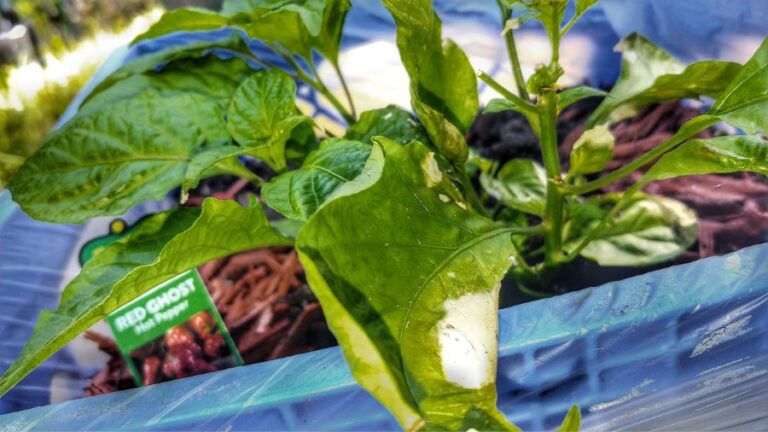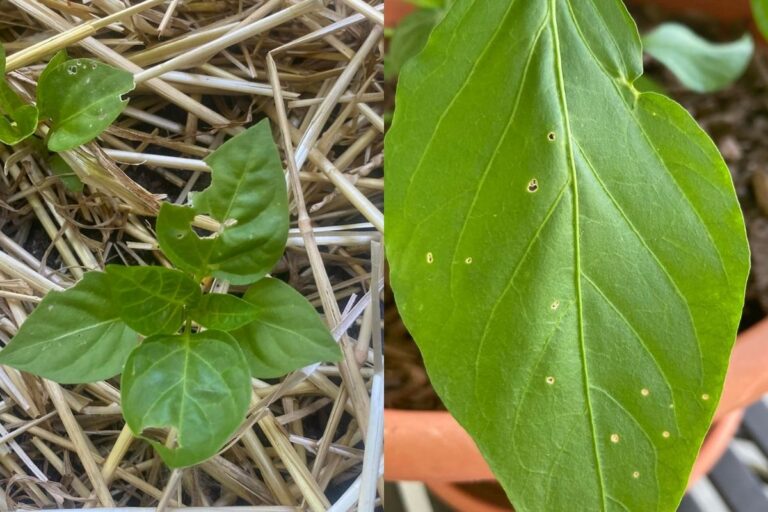Why Are My Potatoes Not Growing (Here’s What to Do)
Have you ever dug up your first potato plant and discovered that it was healthy-looking but unproductive?
Potato is not growing due to compacted or excessively dry soil and cold temperatures. Additionally, freshly cut potatoes may be susceptible to diseases and rot, which can inhibit sprouting. Environmental conditions and constrained pot size can also contribute to the inhibition of sprouting.
Let’s find out why potatoes don’t produce and how to avoid making the same mistakes again.
Low potato yields are a common issue for new growers who over-fertilize in the hopes of getting a large potato crop.
Too much or too little fertilizer is a fine line to walk when it comes to potato production; either way, your potatoes may not make it to the table.
You can easily fix other mistakes that are costing you your harvest.
5 Mistakes That Cause Potatoes To Fail To Form Tubers
Planting in the Wrong Soil
When it comes to preparing potato beds, gardeners frequently make mistakes.
An important factor in determining yield is how much loose and healthy soil you provide instead of how many seed potatoes you sow there are.
To grow healthy potatoes, choose an area with deep, loose soil that isn’t overly fertilized. Loamy soil is preferred.
Acidic soil is ideal for growing potatoes because they do better in soil that ranges in pH from 4.8 to 5.4.
Irregular Watering
Avoid allowing the plants to sit in dry soil and ensure that they are irrigated on a regular basis. The yield can be drastically reduced if the watering is done incorrectly.
In the next section of this article, I’ll go over how to water your potato patch.
Improper Fertilization
If you’re wondering why no tubers are forming under those gorgeous dark green potato leaves and have a moderate level of fertility when planting, you’re not alone.
Potatoes require a lot of foliage to produce a lot of food, which is then stored beneath the root as a tuber.
The right combination of nitrogen, potassium, and phosphorus encourages the rapid growth of strong leaves.
Stop fertilizing while the flower is forming and the tuber is growing in size.
Too much nitrogen in the soil at this time will cause tuber loss or lower yields.
Fertilize your potato plot with a balanced NPK when the plant size is 8-10 inches (20-30cm) tall. Then no need to fertilize again.
Environmental Factors
In fact, researchers discovered that when soil temperatures rise above 77°F (25°C), potato plants send a signal to their roots to stop producing tubers. (Source: Cornell University)
It’s possible that the plants will switch to alternate reproductive strategies, such as the development of more fertile flowers or the appearance of small, potato-like organs on the main stem.
Potatoes grown in above-ground containers are susceptible to failure in hot summers due to daytime root heating.
Potatoes can tolerate warm air, but when the roots are also hot, yields drop dramatically.
Growing in a Small Container
The main issue with growing potatoes in pots or bags is the dwarfism effect that occurs as a result of overcrowding the plants.
Plants perceive that they are growing in a crowded environment, so they produce a large number of small tubers rather than a few large ones.
It is better to have fewer plants but higher yields, so give each potato tuber its own space and soil.
Why Are There No Potatoes? Look For Hints In The Leaves
If you water your potatoes thoroughly and frequently, and no black rot appears on the stems, the potato leaf can be a good indicator of nutrient availability in the soil.
In addition to having a lot of very green foliage, over-fertilized potatoes can have leaves that deform or curl when stressed because they devote all of their resources to leaf formation at the expense of their tubers.
However, under-fertilized potatoes have yellowed leaves before shriveling up and dying.
This is a warning sign that you forgot to fertilize your plants because the young leaves are pale green or even yellow with green veins.
They may also grow slowly or appear smaller than usual.
If your potato plants are yellowing, add a balanced fertilizer and refrain from adding any additional fertilizer to those that have been lush, greasy, and over-fertilized.
How to Water Potatoes Properly
There are a number of variables that affect when and how often you should water potatoes.
As a result, it’s difficult to give a general answer to this question.
Water your potato plot 1-2 times a week. Availability of soil moisture significantly affects the tuber formation and consequently yield of potato.
When it comes to the first watering, there’s no need to rush. Watering the soil is usually not necessary until shoots appear and grow to a length of 4-6 inches (10 to 15 cm).
Besides affecting yield soil moisture quantity also influences the disease or pest occurrence.
Here are a few things to keep in mind:
- It is advised to use warm, sun-heated water. Coldwater lowers yields.
- You can perform watering in the evenings after sunset. This will keep the leaves from getting sunburned.
- Each plant requires at least 3 liters of water. Soil moisture retaining capacity depends on soil texture or type of soil.
- During the budding period, culture requires more moisture. Water consumption for one plant is 5-6 liters per day.
- Early potato varieties require less watering than late varieties.
Weeding Potatoes
You need to remove the weeds after the first shoots appear otherwise they will compete for nutrients and other resources.
The weeds develop faster than the potato seedlings and prevent the normal growth of your young potato leaves.
Remove the weeds in hot and dry climates so that dehydrated roots will dry out quickly and will not germinate again.
During the work, move with your backs forward, so as not to step on the cut weeds.
To reduce weed growth, cover the potato plot with straw, sawdust, or plastic wrap.
Growing High-Yielding Potato Varieties
The texture, flavor, shape, and yield per plant of potatoes vary significantly.
Don’t cut corners when it comes to planting potatoes because there are over 4,000 different varieties.
Choose high-yielding varieties that are resistant to pests and diseases, and keep in mind the growing environment and soil conditions.
Make sure to only use disease-free certified seed potatoes when planting your own garden.



